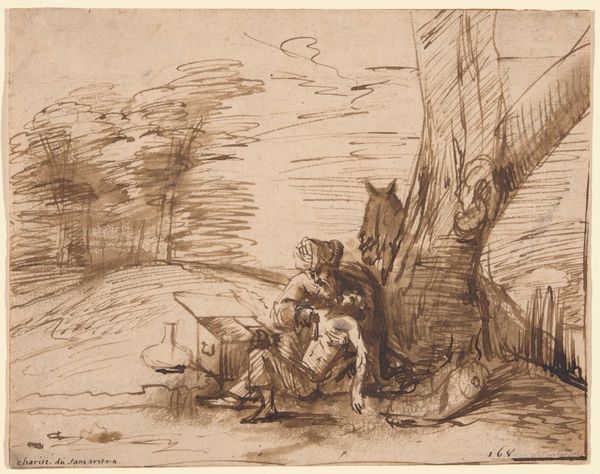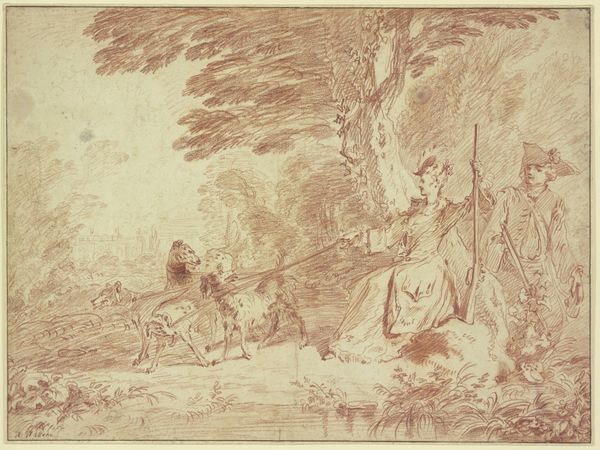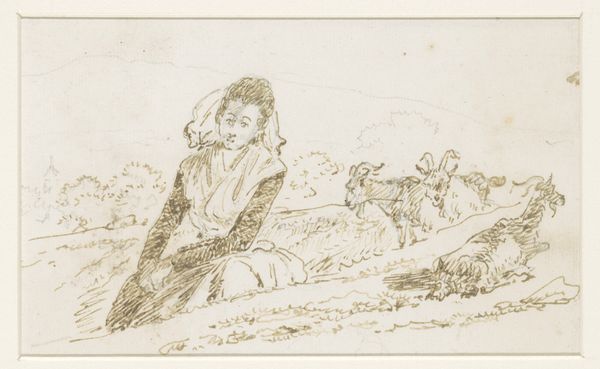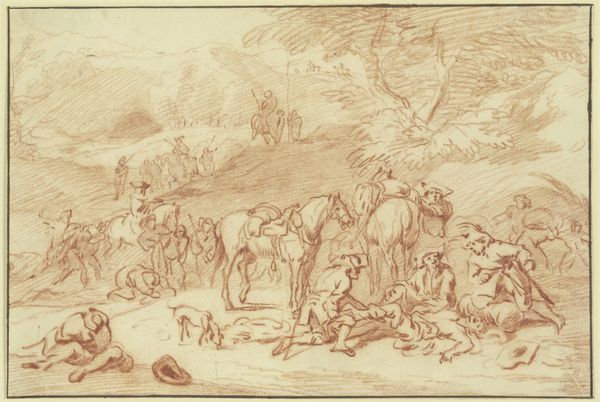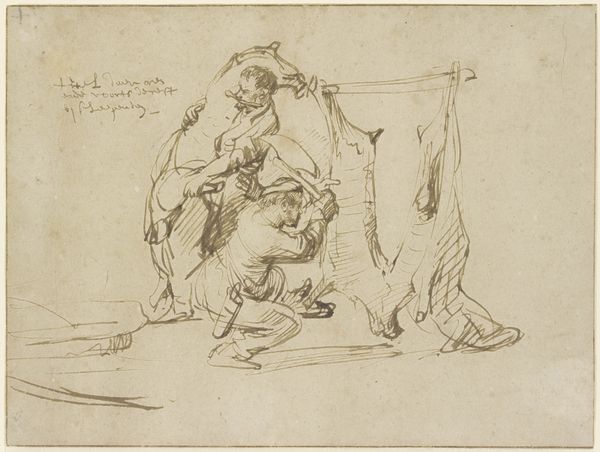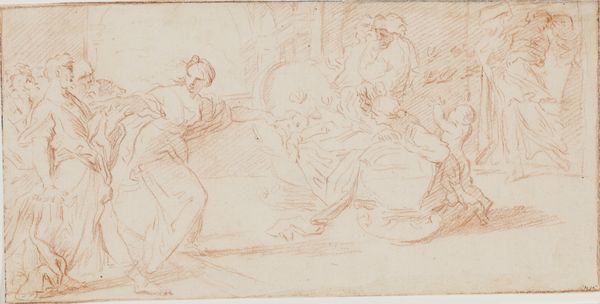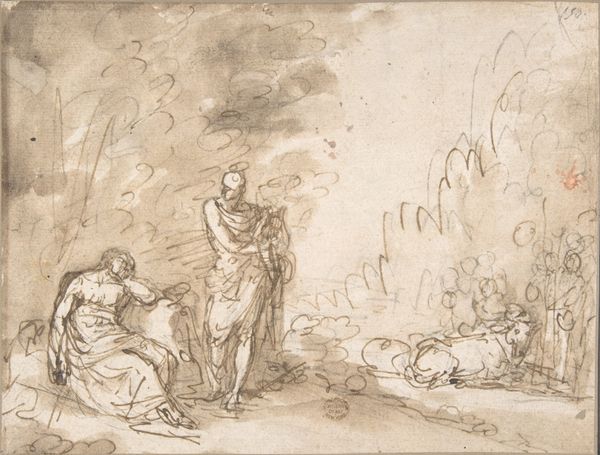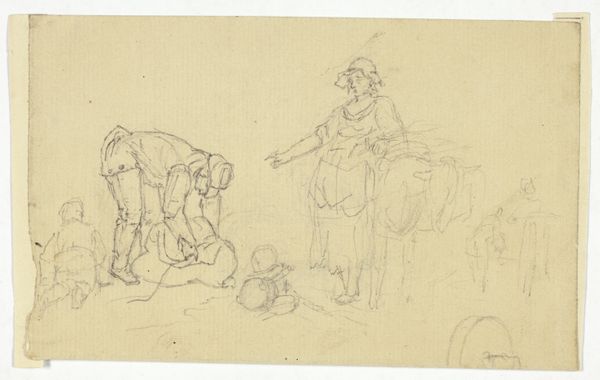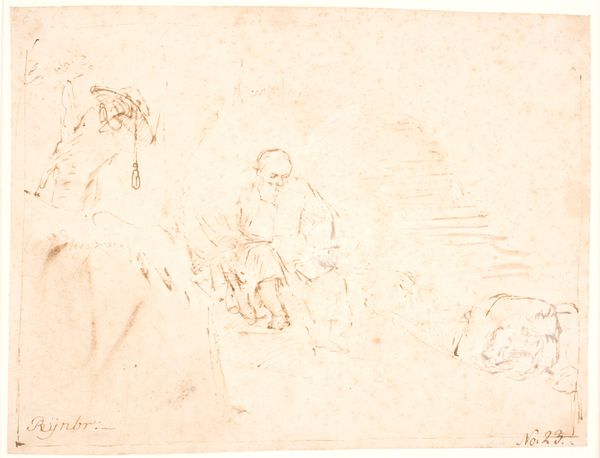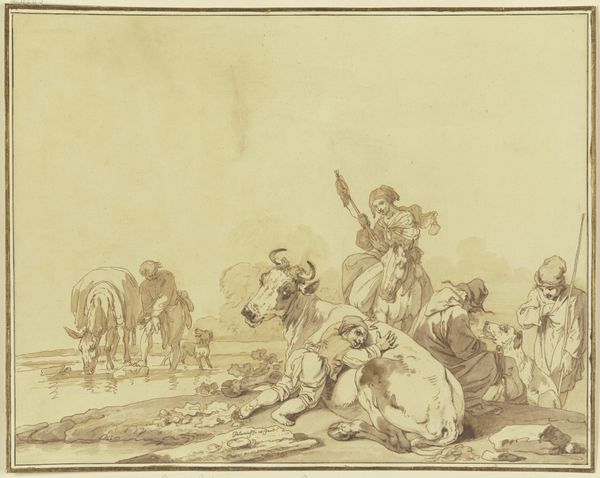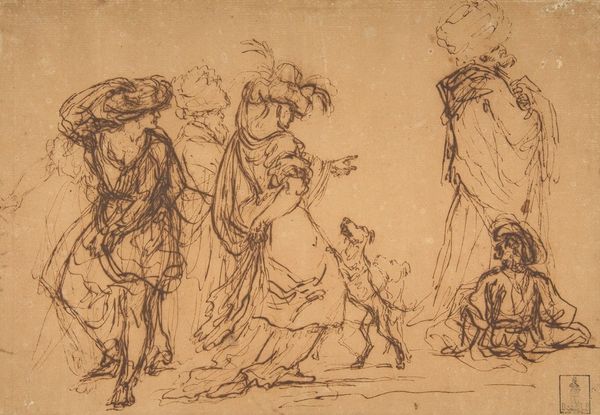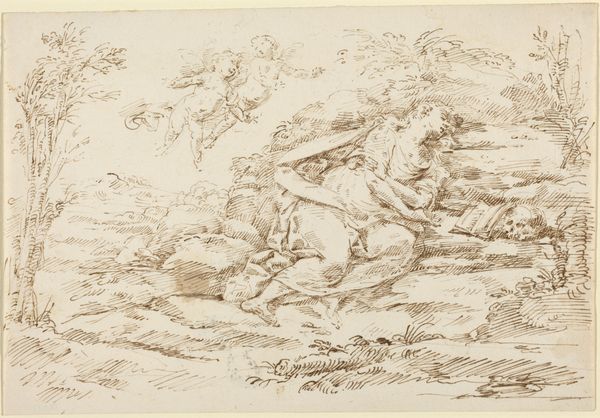
drawing, ink
#
drawing
#
ink drawing
#
narrative-art
#
figuration
#
ink
#
history-painting
Dimensions: 168 mm (height) x 247 mm (width) (bladmaal)
Editor: This drawing, “Cain Slaying Abel” by Rembrandt van Rijn, made between 1648 and 1651, is rendered in ink. The frantic lines and composition give the work a heightened sense of drama. How might Rembrandt’s choice of materials emphasize the violence of the scene? Curator: Think about what ink allowed Rembrandt to do efficiently. It's not as though he had to grind his pigments. The ease with which he could deploy these sweeping lines points to an economy of production, yet also suggests immediacy of conception, a crucial feature to the transmission of any dramatic event. But how do the choices involved in this particular work challenge conventional distinctions between sketch and 'finished' work, high art versus pure documentation? Editor: It's like he's capturing a raw moment, before he had time to really consider it. The loose strokes give it urgency, making it feel immediate and shocking. But the very act of using ink, a readily available commodity, democratizes the process. What implications would this choice have in 17th century Dutch society? Curator: Exactly! The wide availability of ink aligns with the growth of print culture, circulating stories and images to a broader public, thereby altering consumption habits around art. Are we perhaps witnessing a shifting landscape where access to narrative illustration—as embodied in this study—became newly, commercially available? The art becomes part of broader social fabric, and not just something made for the elites. Editor: That makes a lot of sense. It almost transforms the biblical narrative into a kind of news event. Seeing this drawing, I realize how much the materials themselves contribute to our understanding and perception of the artwork. Curator: Precisely. It is as if we can, through close examination of artistic labor and material culture, decode a crucial shift in not only artistic production, but a new economy that challenges long-held beliefs about art's very function.
Comments
No comments
Be the first to comment and join the conversation on the ultimate creative platform.
